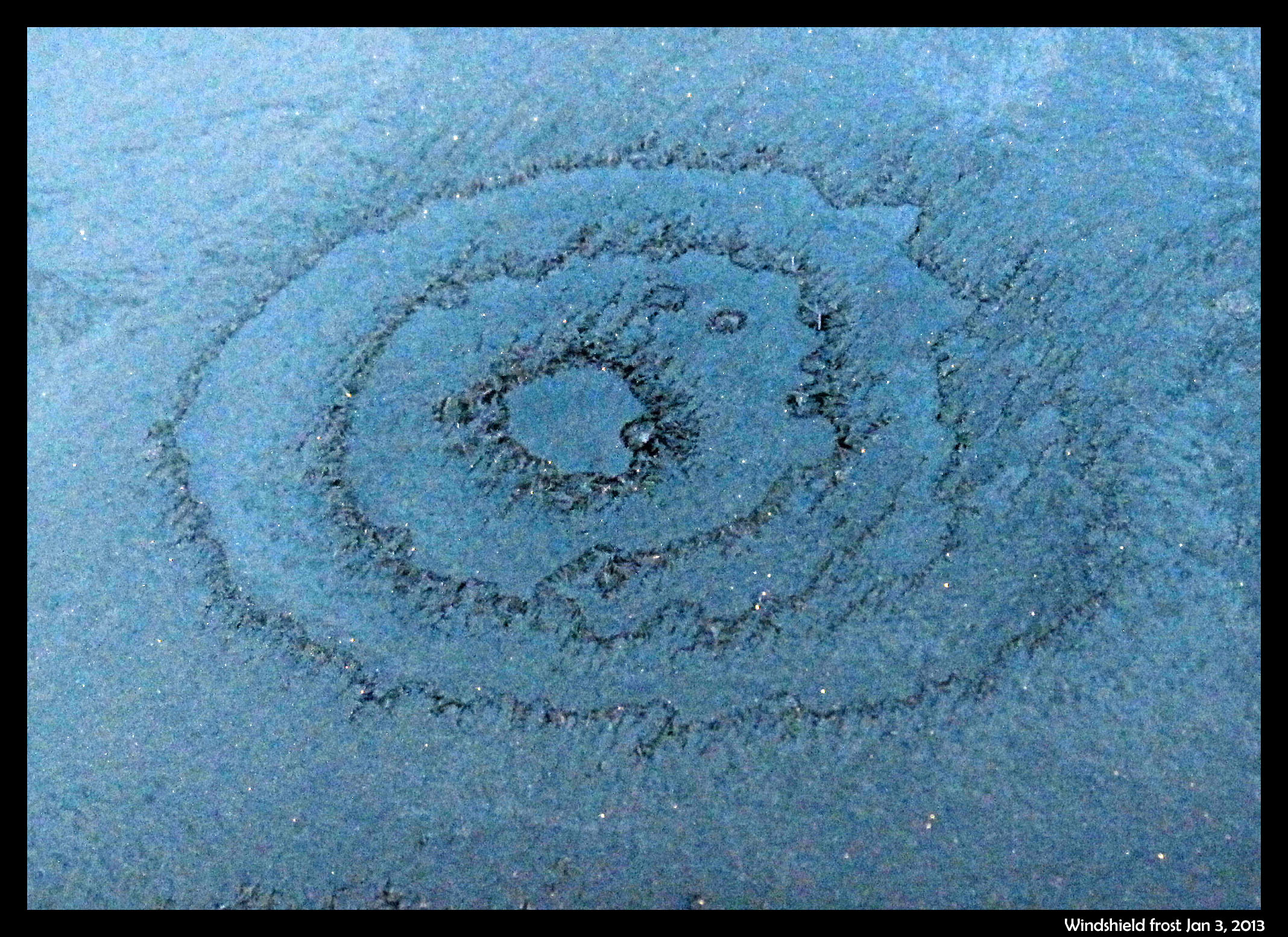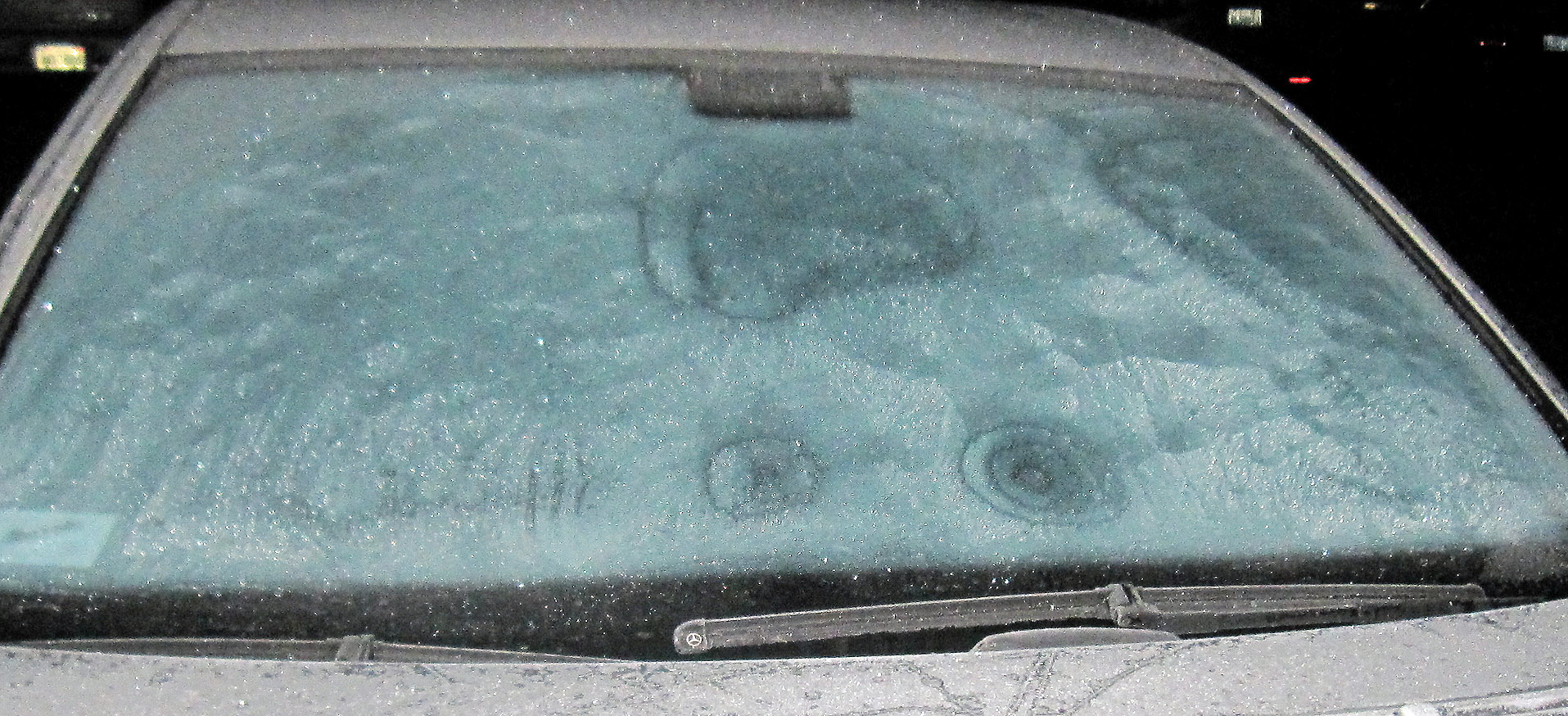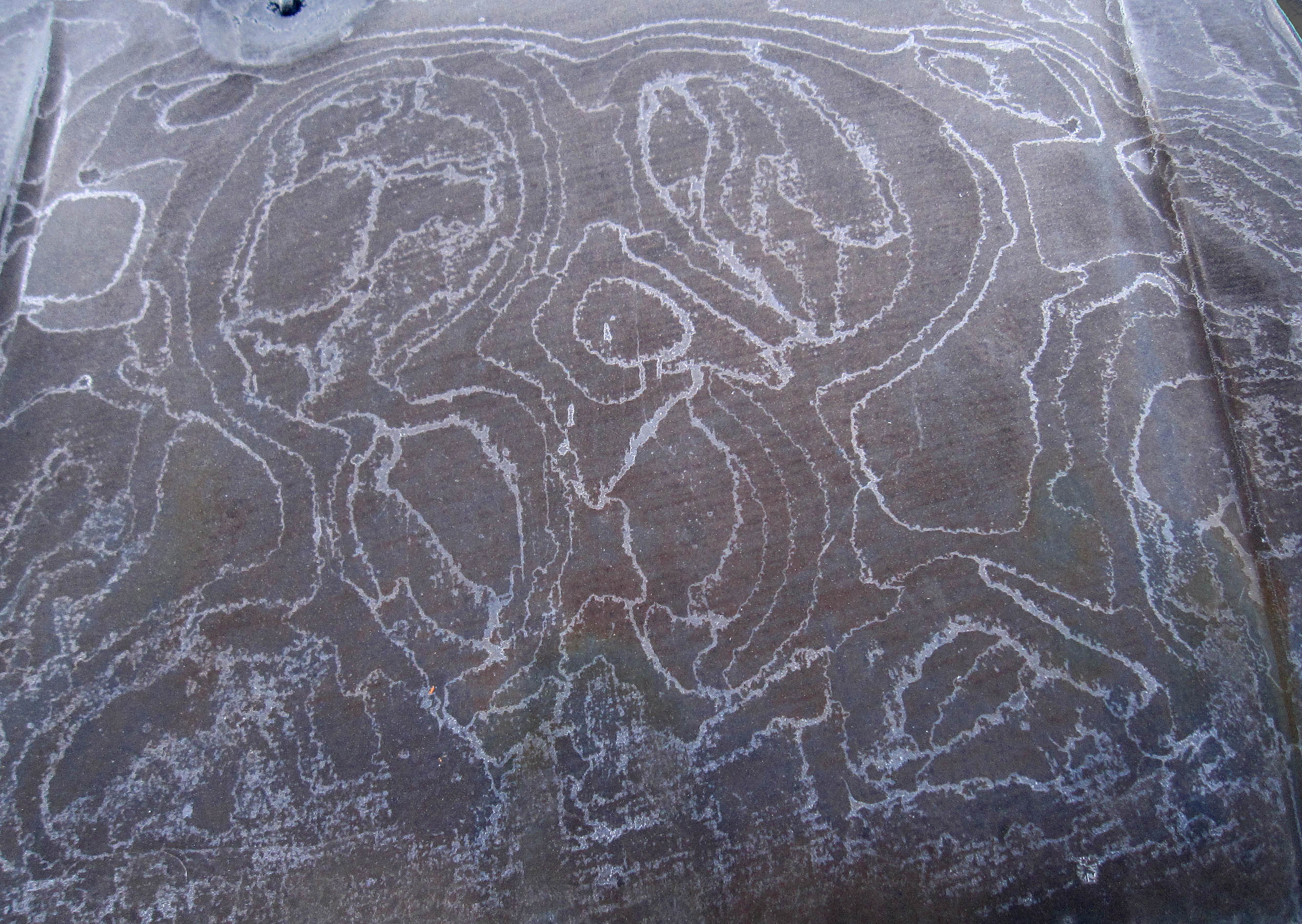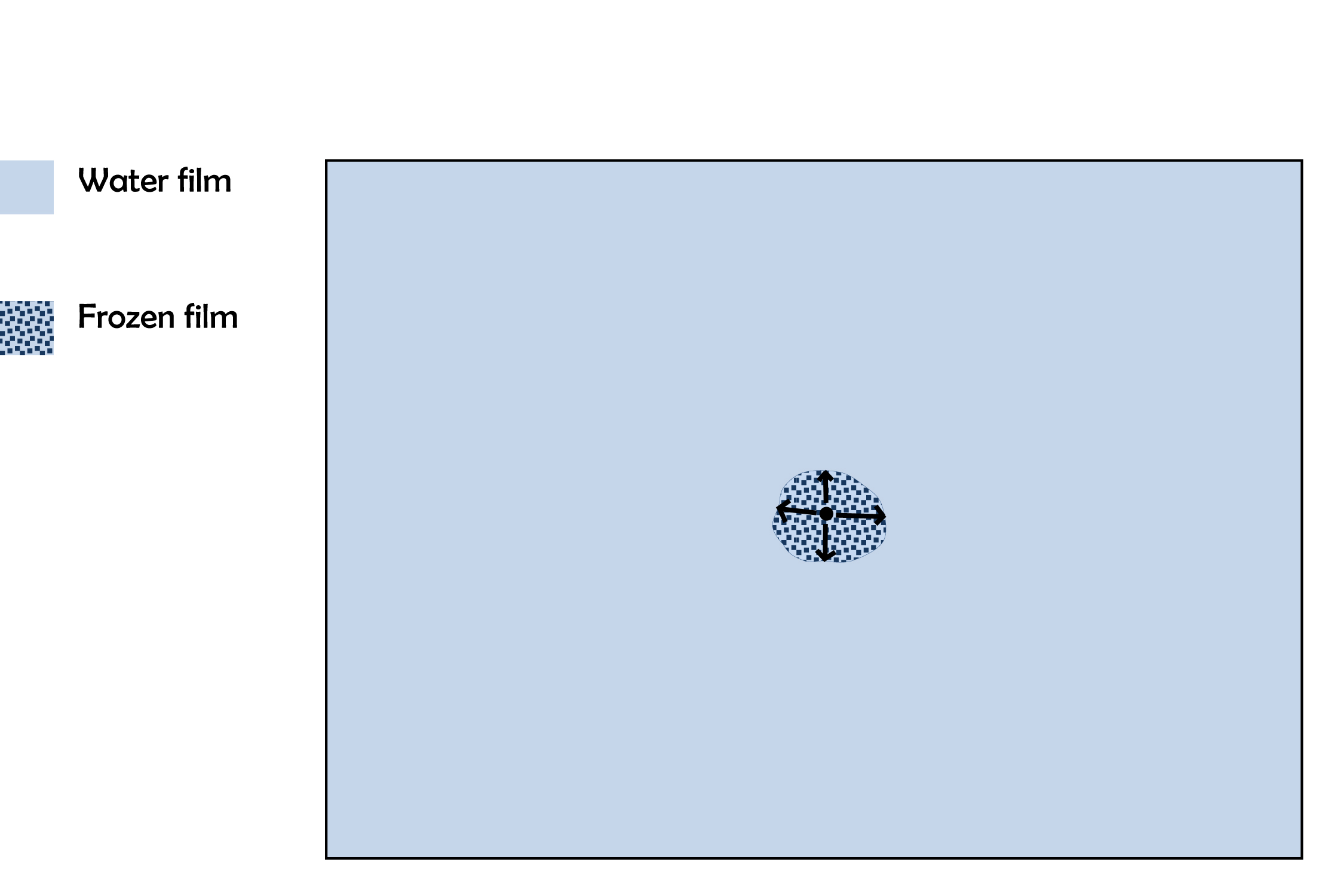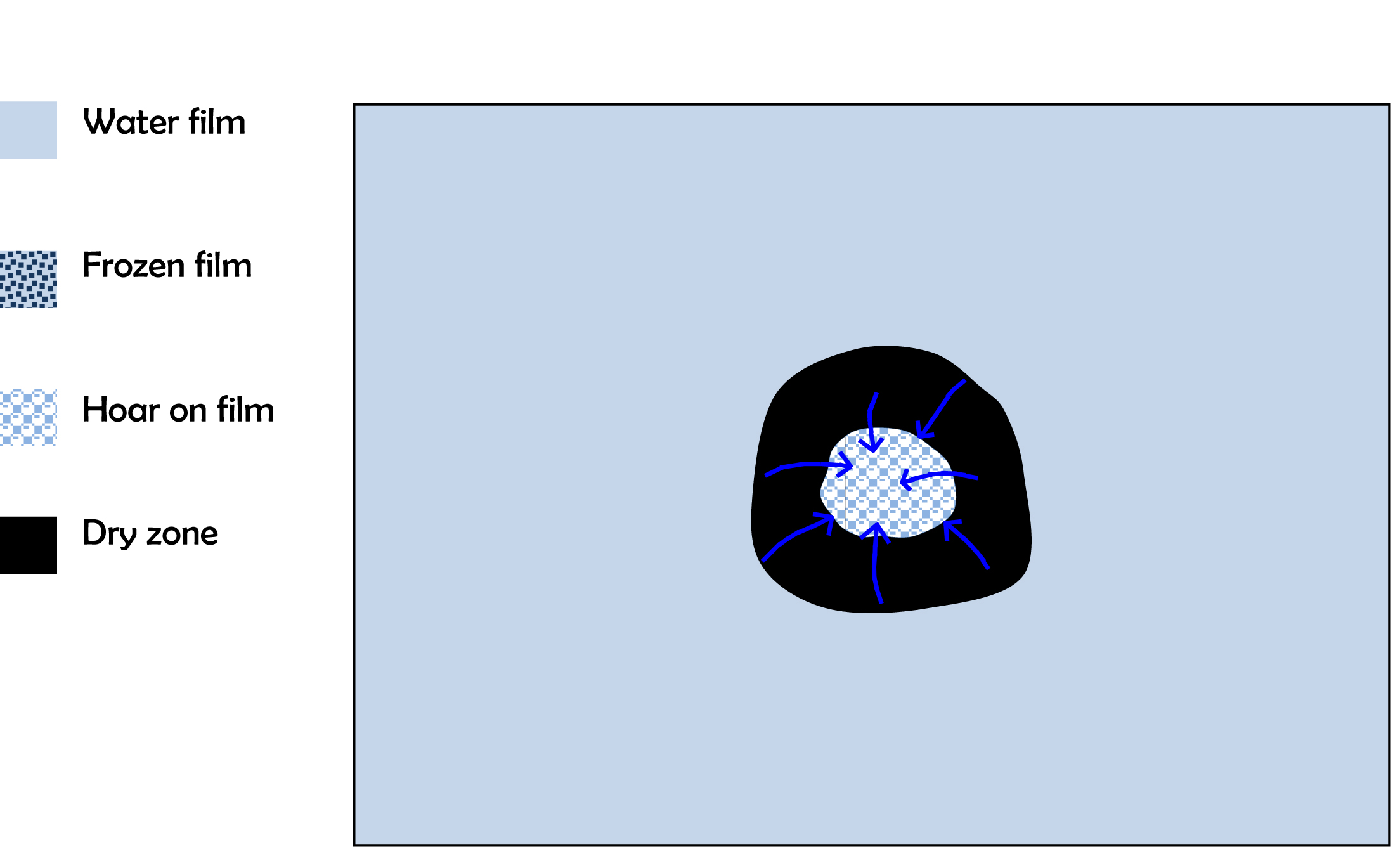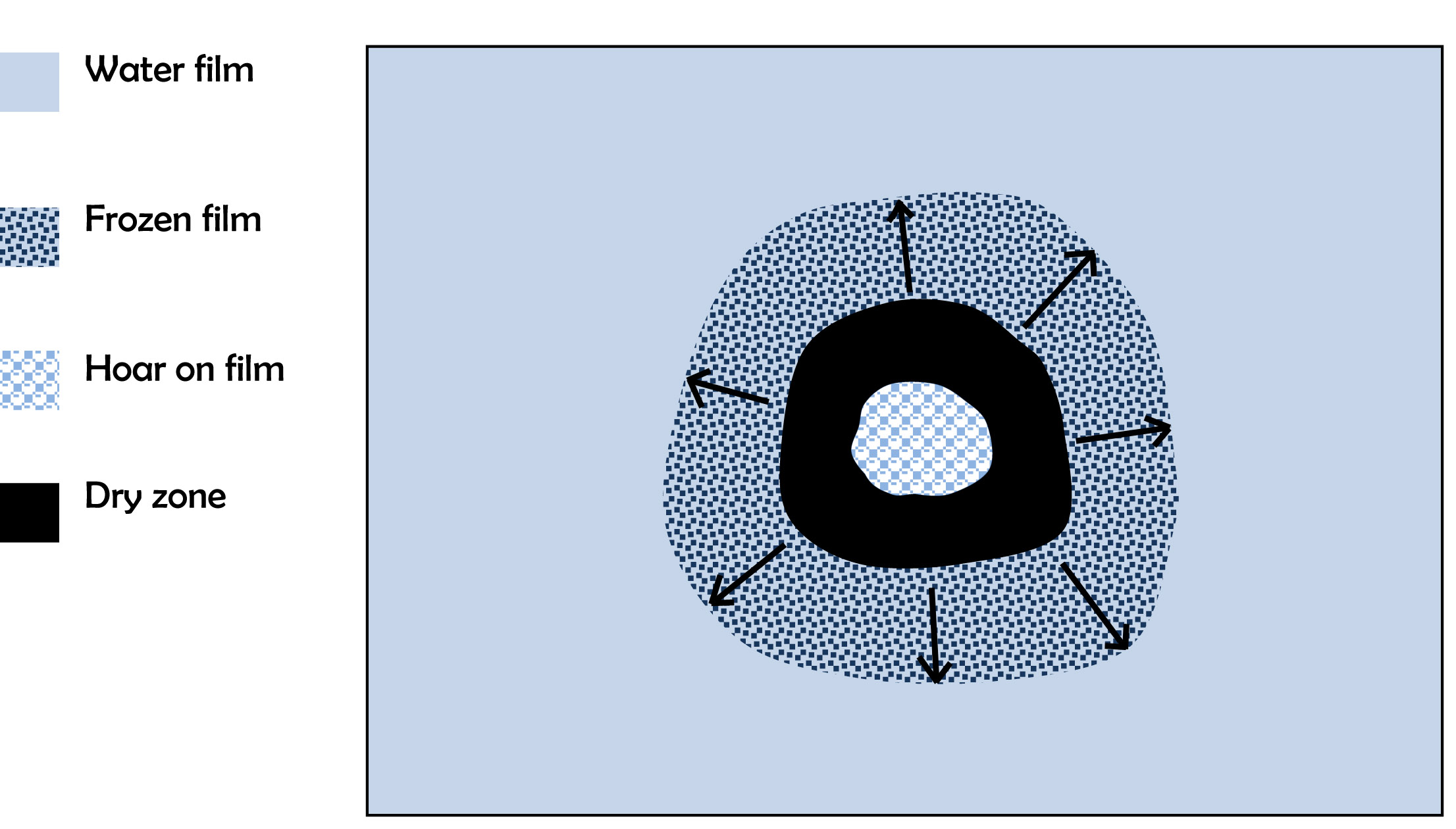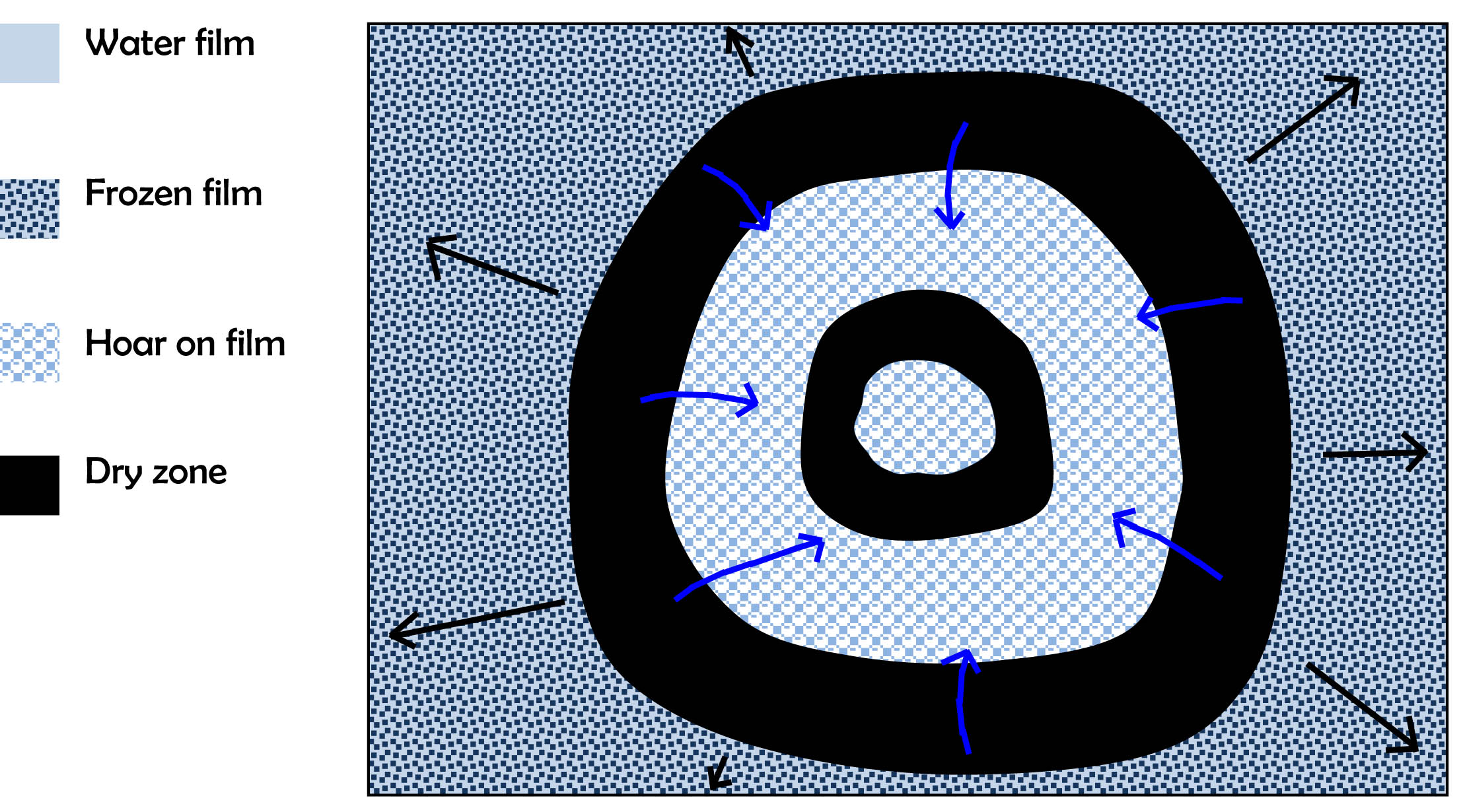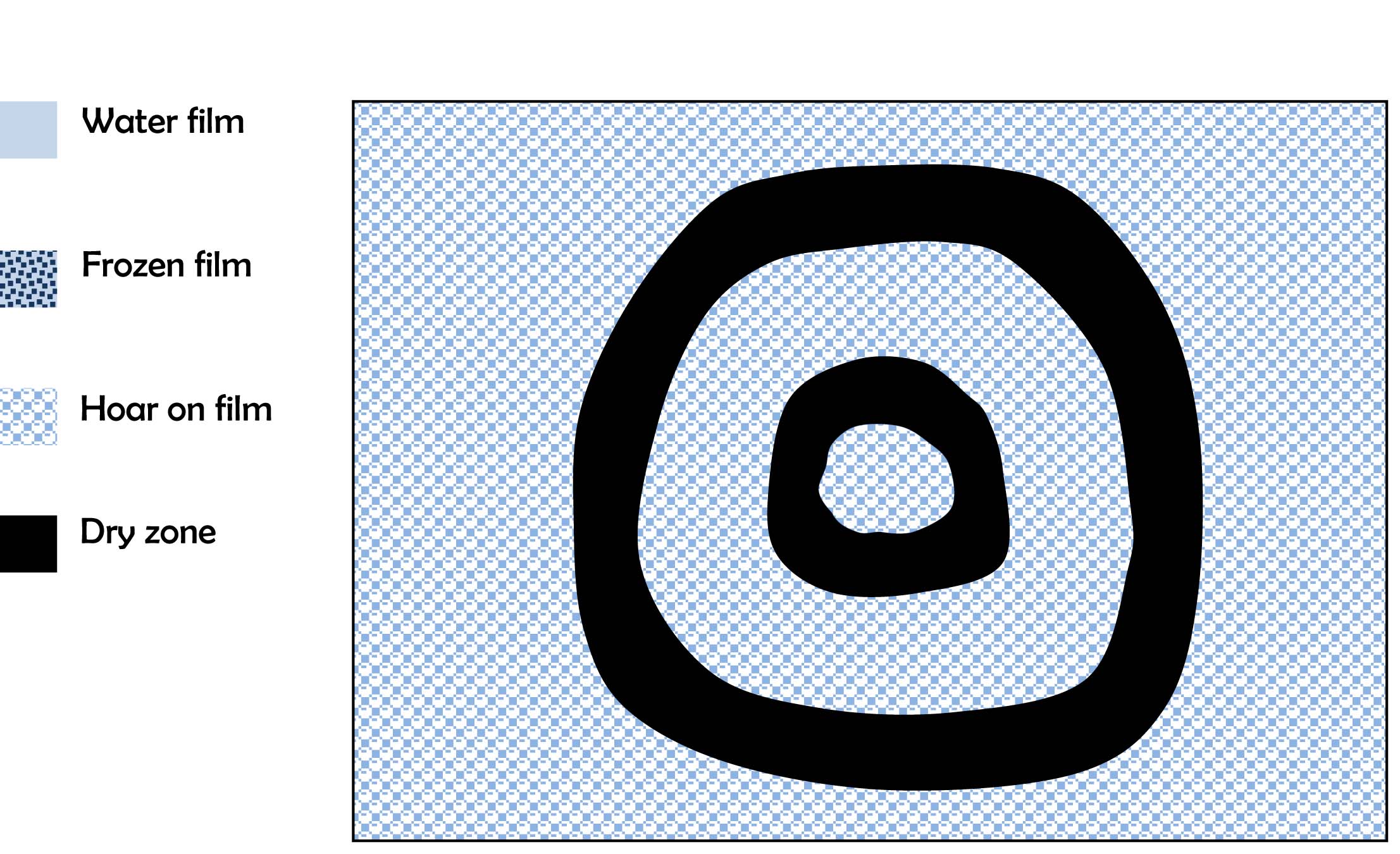| « Hair Ice on Wood and Pavement | Trip of the Ice Man » |
Crystal-to-crystal “communication” through vapor and heat
Two mornings ago, I saw this on the windshield of a parked car.
The bulls-eye pattern wasn’t centered on any particular feature on the windshield, and there were similar, though less developed, patterns nearby. See them on the photo below.
The dark parts are largely frost-free regions, and thus are regions that dried out during the crystallization event. (It was still dark when I took the shots.) Later, under a brighter sky, I saw a different pattern on the hood of another car, a pattern that I figure has a similar cause. In the hood case, shown below, the dry regions are bright due to reflection of the sky.
Now, about those concentric rings …
I puzzled over a larger such pattern in the Feb. 5, 2010 posting “Ripples”. The causative process that I proposed back then seems consistent with this newer observation, but I will clarify it here.
Before the first frost formed, the windshield, though seemingly dry, nevertheless had a thin layer of liquid water. This thin film had cooled to some temperature below freezing. (See the sketch “How hoar frost forms” in the Jan. 11, 2012 posting.) As the windshield and water film continued to cool, freezing was inevitable; the only issue was where. The first such spot to freeze must have had some feature, however minute, that was advantageous to freezing. It may have been a nucleant particle (e.g., a mineral dust grain, a type of bacteria, or even a tiny fleck of ice that wafted in from somewhere else), a slightly cooler spot, or a slightly thicker water film (e.g., from a scratch or indentation). But for whatever reason, the ice formed there first.
Now suppose the ice spreads outward from the nucleation spot in all directions with about the same rate. I suspect this happens when the film is extremely thin, as it would have been under the relatively dry conditions of this day. So, the frozen film grows outward, roughly as a disc. See the sketch below; the black dot in the center is the first place that froze.
As freezing occurs, the “front”, or perimeter likely warms somewhat due to the heat generated from freezing (called the latent heat of fusion), which will slow the rate of freezing somewhat, but for a very thin film on a thick piece of windshield glass, this heating may be of little consequence. More important is the effect of the expanding ice region on the thickness of the surrounding liquid film: as the liquid film gets even thinner; the rate of freezing will slow down (after all, the rate is zero when the thickness is zero). The thickness of this film will decrease because the vapor near the film will start to deposit onto the frozen film region in the center. As vapor gets “sucked” towards the growing hoar frost in the center (arrows in sketch below), the nearby liquid film will dry up, stopping the ice growth.
But as the liquid film evaporates, the surface will cool, just like evaporation from our skin cools us off. (The heat removed by evaporation is far larger than the heat released upon freezing. Thus, we include this effect despite neglecting the heat of freezing.) This cooling will initiate ice just outside the dry zone, which expands outward into the film, as sketched below.
The newly frozen ring will also start drawing vapor from the surroundings, producing a new dry zone. And so the process repeats, causing freezing of the surrounding film. (Also, the hoar growth may extend laterally into the dry zones, thus decreasing the width of the dry zones.)
In general, if the weather remains roughly constant, the fastest cooling happens early in the evening, which is when the initial freezing may be more likely. But the windshield will continue to cool into the night, meaning that at some point, the rate that the freezing spreads out will eventually exceed the rate that a dry zone can form. At this time, the dry zones no longer form and the rest of the windshield freezes.
Finally, the frozen film grows hoar, making a pattern similar to the observation.
The process is likely to be highly dependent on the film properties, as well as to require nearly ideal conditions for the temperature and humidity. And so, the pattern did not appear on the other windshields I saw that morning, whereas the frost pattern on the car hood was much different.
One puzzling feature of that observation described in my previous posting was the dark center – I thought that the center should be frosty, as it is in the present observation. A solution to that puzzle was suggested by Erica Gunn, in the accompanying comment. The hoar growth on the perimeter has a greater access to the surrounding vapor, and thus can grow faster, dwarfing the hoar growth in the center. This alone may produce a darker-appearing center. Moreover, the heating of the disc-shaped ice region (the heat of deposition) can produce a higher temperature in the center, even if the vapor-deposition heating rate is larger on the perimeter. (Think of food cooked in a microwave.) The higher temperature may actually cause the ice in the very center to sublimate (i.e., evaporate from ice), increasing the darkening effect.
The above is all speculation, of course, but it does give a plausible explanation for the apparent "communication" between crystals, a type of interaction that would be required to explain such patterns.
It would be very nice to run some well-characterized experiments with suitably accurate temperature and humidity sensors. Indeed, just knowing some basics, such as how the rate of freezing depends on film thickness would be nice. I know of no such study.
- JN
